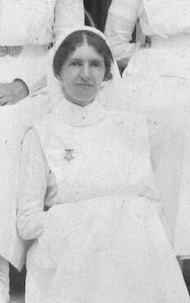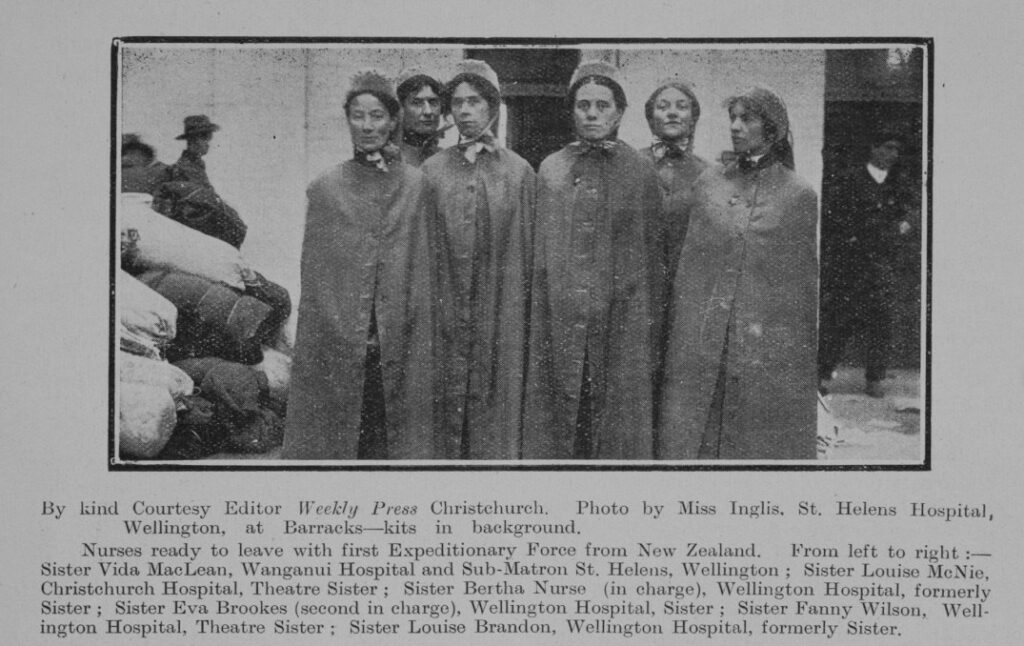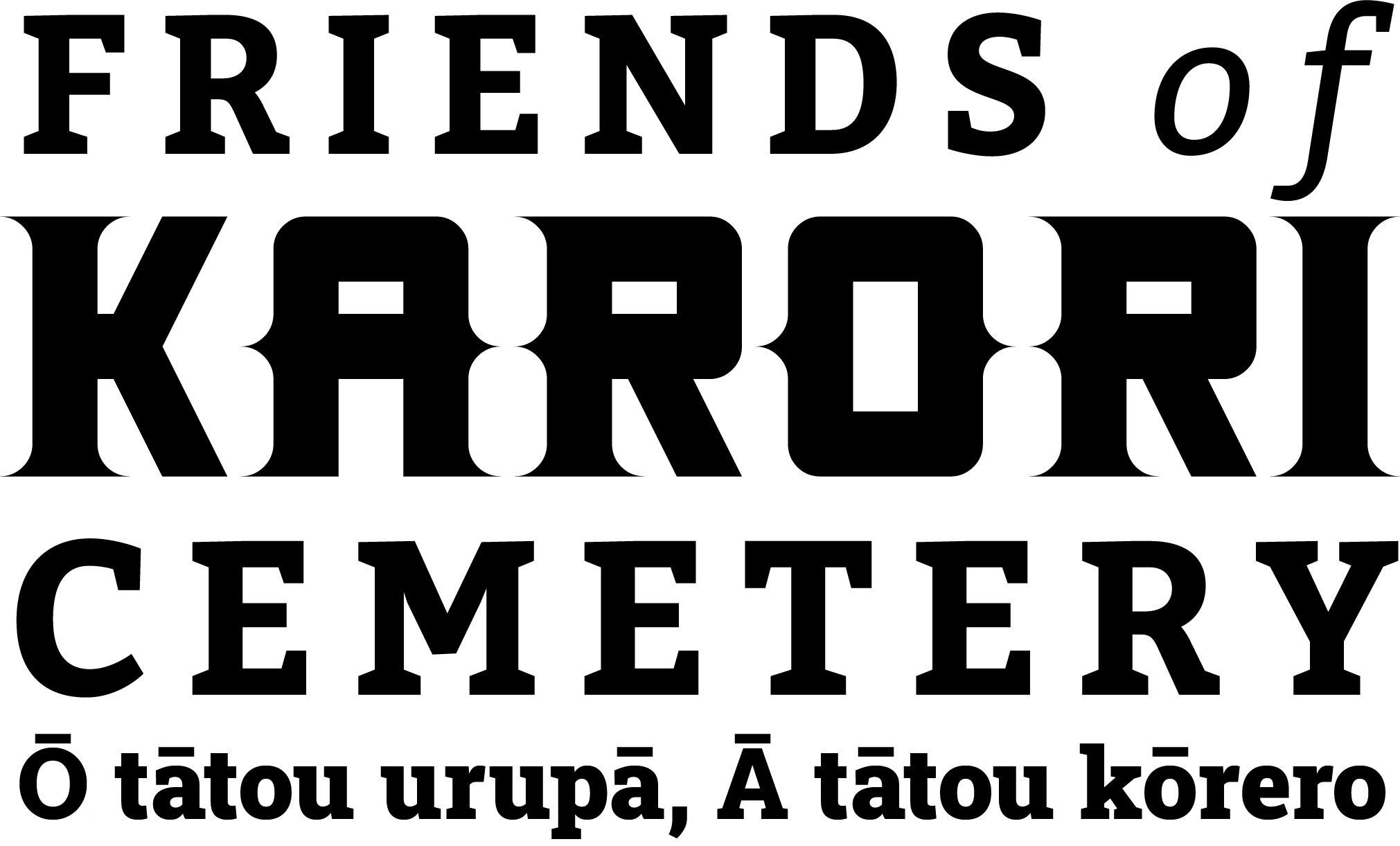Louise Elizabeth Brandon – Nurse WW1
Louise Elizabeth de Bathe Brandon was born in Wellington in 1877. She was the the fourth child born to Henry Eustace de Bathe Brandon and Anna Maria Wilson.
Louise spent many years writing short stories under a pen-name and was very interested in journalism. She was at one time an editor of the ‘New Zealand Free Lance’ and also of the ‘New Zealand Times.’
Louise completed her nursing examinations in 1909 and was the top placed student in those exams. She completed her training in Wellington Hospital in 1910.
When the First World War was declared on 4 August 1914, Matron in Chief Hester Maclean asked if nurses would be sent with the New Zealand Expeditionary Force (NZEF). The response was “No nurses would be sent’. However on 7 August Hester Maclean received a request for six nurses to proceed with the New Zealand Expeditionary Force.
The six nurses requested on 7th August left NZ on the 15 August 1914 for an unknown destination, which turned out to be Samoa. Louise Brandon was one of these nurses and along with her colleagues she replaced the German nurses at Apia Hospital.
The New Zealand Army Nursing Service (NZANS) had yet to be established, therefore Louise and the other nurses were attached to the New Zealand Medical Corps – No 4 Field Ambulance, as members of the New Zealand Medical Corps Nursing Service Reserve.
Louise returned to New Zealand from Samoa and along with 13 other nurses left on the hospital ship Maheno on its maiden voyage from Wellington on 10 July 1915.
On the Maheno there were 7-8 doctors, 3 chaplains, 14 nurses and 60-70 orderlies. The doctors, chaplains, and nurses had officer status and enjoyed better accommodation and first class passenger menus. Although the government had said that nurses would be treated as officers, it is reported that Lieutenant-Colonel James Elliott, the senior military officer on the Maheno’s first voyage, withdrew many of the nurses privileges, greatly souring relations.
During the voyage the nurses were responsible for sorting and packing all the donated linen and knitted goods. Each staff nurse was responsible for training six orderlies. There were lectures, incident simulations, and bandaging practice.
The Maheno sailed via the Suez to Anzac Cove arriving on 26th August 1915. Records complied from the ships diary note that on arrival at Anzac Cove the Maheno found ‘a destroyer and cruiser bombarding the coast immediately opposite to us. Several bullets came on board, which added excitement to the proceedings’.
Louise and the other nurses onboard were immediately put into action and on the 28th of August the ship left with 445 patients for Mudros, a port in Lemnos, Greece. The ship returned to Anzac on the 30th August. The ship’s diary states that they were faced by epidemics of diarrhea, dysentery, and other intestinal complaints. The worst wounds were caused by bombs and shrapnel. Lice were also noted as being bothersome.
Conditions on the ship must have been frantic. One nurse wrote ‘I had theatre duty, and when we were not operating we were all dressing wounds. . .some of the wounds were ghastly, and gas gangrene was prevalent. We had 13 amputations in the short trip from Mudros to Alexandria.’
The next five weeks were spent treating wounded from Gallipoli, either at ANZAC Cove, Mudros or transporting them to Malta or Alexandria. One of the other nurses onboard wrote that the Maheno ‘looks like what she is – an errand of mercy for all you men…’
Louise returned to New Zealand on the Maheno on 1 Jan 1916 and continued serving on the ship until March 1917 when she joined another hospital ship ‘Marama’.
Her third overseas posting was on the Corinthic and she also spent time as the Matron of the New Zealand Officers’ Convalescence Hospital at Brighton. Louise finally concluded her nursing service on 1 February 1920.
Throughout WW1 Louise always worked alongside her friend Louise Alexa McNie (later Buchanan). The two women sat their nursing exams the same year, went to Samoa together and worked on the Maheno, Marama, and Corinthic together.
Both Louise Brandon and Louise McNie were awarded the Associate Royal Red Cross. Established by Queen Victoria, this decoration was conferred exclusively on women until 1976. The award is made to a fully trained nurse of an officially recognised nursing service, military or civilian, who has shown exceptional devotion and competence in the performance of nursing duties over a continuous and long period, or who has performed an exceptional act of bravery and devotion at her or his post of duty.
Following her return to New Zealand Louise Brandon became Matron of the Military Hospital at Rotorua. She also had a practice of her own at Kelvin Chambers, 16 The Terrace.
In 1933 Louise attended an International conference of Nurses in Paris and Brussels, and spent 8 months on holiday in England.
Upon her return from the war Louise lived at her home at 56 Pipitea St, Thorndon. She left this property to two of her nephews upon her death. She also left funds to support her sister Gladys and brother Gerald. Louise never married.
Louise died in Wellington Hospital on 23 September 1945 after a long illness. Her ashes are in the Soliders Niche (DIV B1/2) in the Services Section.
Note: Many members of the wider Brandon family were involved in WWI. Louise’s brother Major Percy Eustace de Bathe Brandon OBE was also a decorated soldier, brother Private Gerald served in Egypt. Louise’s brother in law Robert Thomas Heaney was killed in action in France in April 1918. We have also featured Louise’s sister Constance in another story (https://friendsofkaroricemetery.co.nz/constance-annie-de…/).




